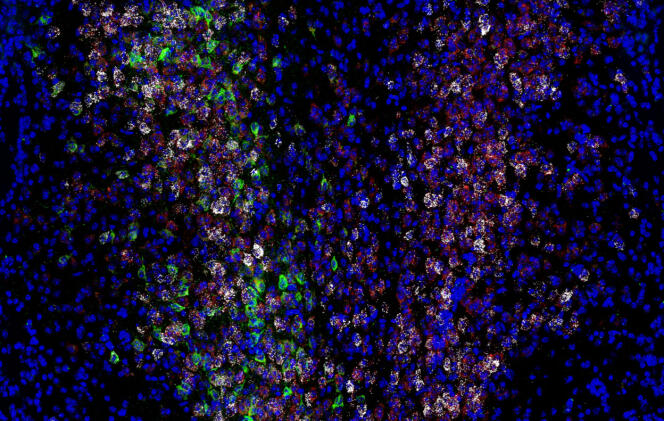The molecule that sorts good and bad memories
[ad_1]

The scent of the rose or the spiciness of its thorns, the beauty of a Schubert quartet or the strident alarm of your car, the sweetness of a first kiss or the pain of a first burn: our brain sorts every day good and bad memories. But how does this essential sorting occur? Who orchestrates it, and by what means? A study published on July 20 in the journal Nature has just lifted a part of the curtain covering this mystery, an essential obstacle to understanding our emotions.
In 2015, Kay Tye’s team, at the Salk Institute in La Jolla (California), had already discovered that these contradictory perceptions follow two distinct neural pathways inside the amygdala, this small nucleus of the brain fundamental in the treatment and memorizing our emotions. The neurobiologist and her collaborators had shown how the hearing of a sound, previously associated with a food reward, caused electrical impulses on one of the paths, while the note associated with a small current discharge mobilized the other nerve track. “We had highlighted these two routes, analogous to two railroad tracks taken by the positive and negative experiences, but we lacked the switch, the signal that indicated the correct rails to take”explains the neurobiologist.
Chief Signalman
The article published in Nature provides the identity of the chief switcher: a molecule called “neurotensin”. This peptide, a small assembly of amino acids, researchers at the Salk Institute had already found traces of by following the genes involved in the two groups of “rails”. Those in the positive pathway seemed in particular to encode a neurotensin receptor, already identified as one of the many regulators of neuronal activity. And if the extra played a leading role?
The team first developed a specific detector for the famous peptide in mice. “We found that the concentration of neurotensin in the amygdala was increased by reward and decreased by punishment,” says Hao Li, first author of the article, a postdoctoral fellow at the Salk Institute during this study and who opened his own laboratory in September at Northwestern University in Chicago. An important clue. But no proof yet.
To do this, the La Jolla researchers “artificially manipulated” this concentration using two state-of-the-art techniques, developed over the past decade. They first used the system Crisp to inactivate the genes producing neurotensin in the thalamus, upstream of the amygdala. Deprived of the neuropeptide, the mice were shown to be almost unable to memorize the sound associated with a sweet cookie. Conversely, the learning of the threatening signal was accelerated.
You have 50.44% of this article left to read. The following is for subscribers only.
[ad_2]
Source link








